Heroin is an extremely addictive drug that is synthesized from morphine, which is a natural derivative of the opium poppy plant. Heroin is a synthetic opioid analgesic, which means that it has powerful pain-killing properties.
Understanding Heroin
Learn about heroin and substance abuse
As is also the case with both natural and synthetic opioids, heroin is both dangerous and highly addictive.
Heroin is most commonly abused because of the intense euphoria that occurs quickly after ingestion. When a person uses heroin, which usually occurs by inhaling, smoking, or injecting it, the body converts the drug into morphine. The reconstituted morphine then triggers receptors that regulate the release of hormones that are associated with excitement, pleasure, breathing, and blood pressure.
Users can develop tolerance to and dependence upon heroin with stunning rapidity. After using heroin only a few times, people may find that they need either larger or more potent doses in order to achieve the high that they experienced the first time. This tolerance is usually accompanied by often painful withdrawal symptoms when a user either attempts to stop using heroin or is unable to acquire the drug. These symptoms can occur as quickly as within six hours of heroin abstinence, and can last as long as a week.
Though heroin abuse and addiction can inflict profound damage on a person’s mental, physical, social, and emotional wellbeing, dependence upon heroin can be successfully treated with therapy, medication, or a combination of the two.
Statistics
Heroin addiction statistics
Experts estimate that more than four million Americans have used heroin at least once during their lives, and that about one in four heroin users will become addicted to the drug. Globally, more than nine million people are estimated to be current or past abusers of heroin. The World Health Organization (WHO) has identified heroin abuse as the world’s most common form of opioid dependence.
Economists estimate that heroin abuse and addiction may cost the U.S. economy as much as $30 billion every year due to expenditures associated with crime, lost productivity, medical care, trials and incarcerations, and social welfare programs.
Heroin abuse accounts for more than 15 percent of admissions to drug treatment programs in the United States and is associated with more than half of all drug-related deaths. According to the U.S. Centers for Disease Control and Prevention (CDC), heroin-related overdose deaths have increased almost 400 percent since 2000.
Causes and Risk Factors
Causes and risk factors for heroin addiction
An addiction to heroin or any other substance can result from a multitude of genetic and environmental influences acting alone and in concert with one another. While no single definitive precursor will predict the development of a problem related to heroin abuse and addiction, the following factors can increase the odds that a person will experience such a problem:
Genetic: Family history is strongly associated with the development of a substance use disorder, with some experts stating that genetics account for 50 to 60 percent of a person’s risk for developing an addiction. One study into the genetics of addiction found that children of addicted parents are eight times more likely as children of non-addicted parents to develop an addiction to heroin or another drug. On a specific genetic note, research reported by the National Institute on Drug Abuse (NIDA) suggests that variations in the dopamine receptors in a person’s brain can influence that person’s susceptibility to addiction.
Environmental: Research has revealed several environmental factors that may increase a person’s likelihood for developing an addiction to heroin or another drug. For example, while family history can have a genetic component, it is also an environmental factor. Children who grow up in homes where substance abuse, mental illness, and/or domestic violence are present are at increased risk for engaging in substance abuse – even if the children are adopted or otherwise not biologically related to the parents. Living in a stressful environment or in a community where drug abuse is prevalent can also raise the odds that a person will abuse drugs.
Risk Factors:
- Family history of drug abuse and/or mental illness
- Presence of domestic violence within one’s family
- Personal history of mental illness or prior substance abuse
- Experiencing trauma
- Gender (Heroin abuse is more common among men)
- Age (Heroin abuse is more common among teens and adults under age 30, with 22 being the national average of first use)
- Low self-esteem
- Poor impulse control
- Poor coping skills
- Poverty
- Associating with peers who abuse drugs
Signs and Symptoms
Signs and symptoms of heroin addiction
Individuals who engage in the abuse of heroin or other drugs can be quite skillful at hiding the signs of their self-destructive behaviors. However, certain indicators are likely to eventually appear. The following are common signs and symptoms that a person may be abusing heroin:
Behavioral symptoms:
- Withdrawing from family and friends
- Possessing hypodermic needles, syringes, and other drug paraphernalia
- Wearing long sleeves and long pants, even when not appropriate for the weather (to hide evidence of injection drug abuse)
- Acting in a secretive, unaccountable, or otherwise deceptive manner
- Expressing out-of-character aggressiveness, rage, and/or irritability
- Experiencing unexplained financial problems
- Isolation
Physical symptoms:
- Sudden, unexplained weight loss
- Persistent scabs and sores (from injection drug use)
- Burn marks on fingers, lips, and/or nose (from smoking heroin)
- Pinpoint pupils
- Drowsiness to the point of unconsciousness
- Failure to menstruate
- Bloodshot eyes and runny nose
- Dark circles under eyes
- Nausea and constipation
Cognitive symptoms:
- Disorientation
- Impaired memory
- Difficulties with concentration and focus
- Problems with abstract reasoning
- Hallucinations
Psychosocial symptoms:
- Withdrawal from family and friends
- Poor impulse control
- Loss of interest in activities that were previously very important
- Extreme apathy
- Euphoria, often followed by depression
Co-Occurring Disorders
Heroin addiction and co-occurring disorders
Disorders as severe as heroin use disorder rarely occur without being accompanied by co-occurring conditions, such as the following:
- Posttraumatic stress disorder (PTSD)
- Major depressive disorder
- Persistent depressive disorder
- Anxiety disorders
- Bipolar disorder
- Other substance use disorders
Effects
Effects of heroin addiction
The following are among the many common ways that heroin abuse and addiction can damage a person’s physical health, mental acuity, emotional stability, and socioeconomic wellbeing:
- Scars, scabs, and abscesses
- Nausea
- Vomiting
- Diarrhea
- Strained, damaged, or ruined relationships
- Poor job performance, often leading to joblessness
- Kidney damage
- Liver damage
- Respiratory problems, including pneumonia
- Muscle pain and cramping
- Financial problems
- Legal problems
- Hallucinations and delusions
- Anxiety
- Panic
- Paranoia
- Hypertension
- Heart disease
- Stroke
Withdrawl & Overdose
Effects of heroin withdrawal and overdose
Effects of heroin withdrawal: When a person who has become dependent upon heroin stops using the drug, either intentionally or involuntarily, the following withdrawal symptoms may occur:
- Strong cravings for heroin
- Vomiting
- Diarrhea
- Stomach cramps
- Muscle pain
- Excessive perspiration
- Runny nose and watery eyes
- Hallucinations
- Agitation
- Irritability
Effects of heroin overdose: Heroin abuse quickly leads to tolerance, which forces users to ingest increasingly larger or more potent doses. This can significantly raise a person’s risk for overdose, which can be fatal. The following are among the more common indicators that a person is suffering from heroin overdose:
- Depressed breathing
- Drop in blood pressure
- Heart failure
- Kidney failure
- Pinpoint pupils
- Inability to be awakened
- Seizure
- Coma



